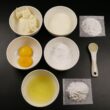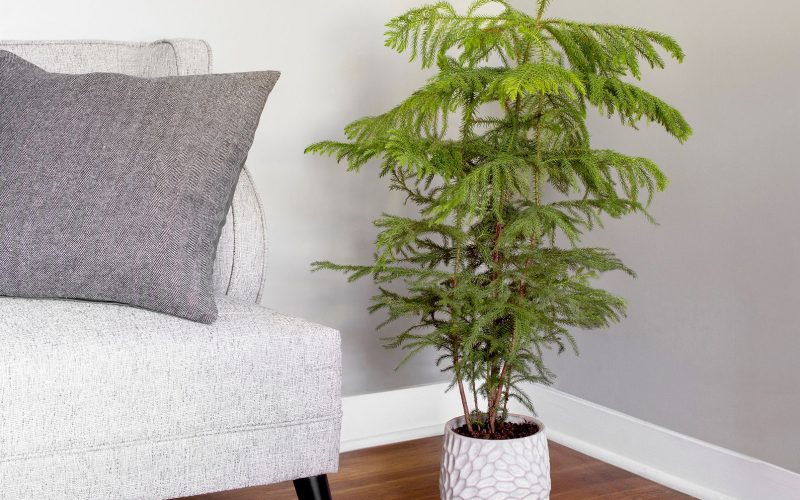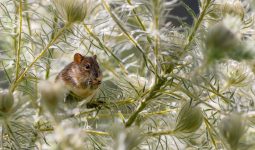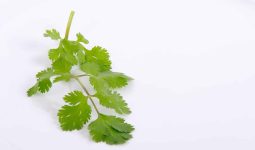Norfolk Pine Houseplant is a needle-like evergreen plant native to the subtropical areas of the South Pacific.
These are the plants usually used as cute little houseplants for Christmas decorations. After Christmas has passed, you can have your living Norfolk pine houseplant.
Originally a pine tree, it looks like a monkey puzzle tree. These Norfolk pine houseplants can grow up to 200 feet in length.
This Norfolk pine houseplant can be cultivated as a landscape tree in North America, especially in subtropical climatic conditions.
Spiritual development is just similar to a small seed; if planted, it will grow as it reaches the light!
The Norfolk pine houseplant’s appearance is as follows: It has a straight, long trunk along with attractive, well-proportioned branches.
The branches are covered with little needles curved inward. However, this is a slow-growing plant, and in some regions, it is called a Christmas tree.
On Christmas Eve, people decorated this Norfolk pine houseplant with ribbons and other beautiful ornaments to make it more attractive.
After the event, the plant is usually abandoned. However, if it is kept below 5 feet, it can be kept as a houseplant.
Norfolk Pine Houseplant, Bottom-Line
The botanical name of the Norfolk pine houseplant is Araucaria heterophylla. However, commonly, it is called Norfolk Island pine and Norfolk pine.
Norfolk belongs to the Conifer plant type because it contains needle-like spikes. The mature size of Norfolk can grow up to 200 feet in forest areas and homes and 3 to 8 feet in length.
Every plant has its own fundamentals – in order to grow!
These plants are happy with sunlight but can survive in shady conditions. They require sandy and peaty soil, i.e., a peat-based potting mixture, to grow happily.
They grow well in soil with an acidic pH. They are found on Norfolk Island in the South Pacific.
Tips & Tricks to Grow Norfolk Pine Houseplant
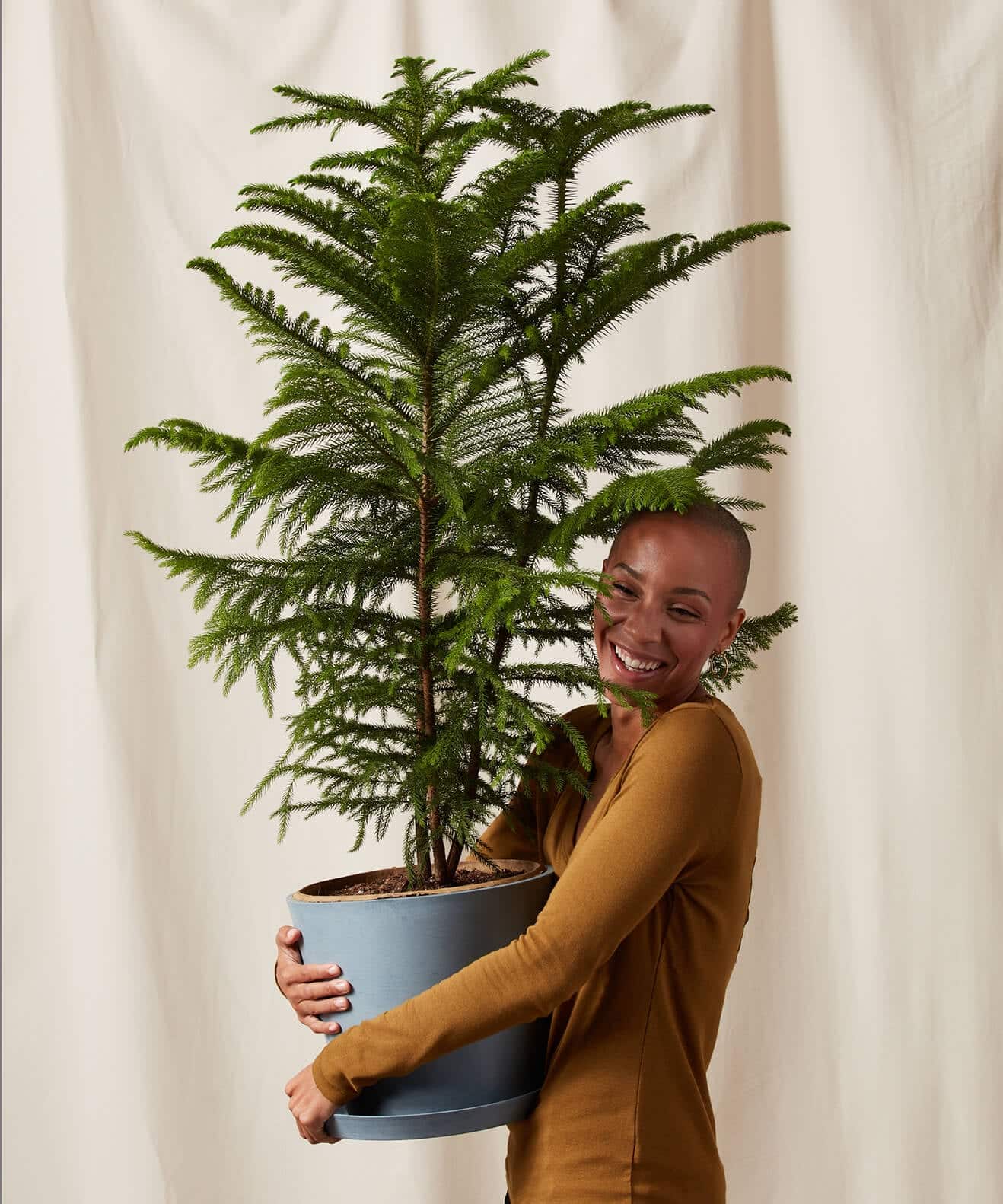
Growing a Norfolk pine houseplant begins with considering a few crucial elements. This houseplant can survive both indoor and outdoor atmospheres.
They are quite easy to look after as they are forgiving to negligence. When growing outdoors, you should plant Norfolk in moderately moist and sandy potting soil where the plant catches direct sunlight.
Once it is fully established, it will easily survive dry conditions. When growing the Norfolk pine houseplant indoors, try to place it in a sandy, porous, and acidic potting mixture.
Adding peat moss and sand to a moderate potting mixture will enhance the porosity and acidity. The soil must be damp but not soggy. Provide as much sunlight as possible to your Norfolk pine houseplant.
Care and Maintenance of Norfolk Pine Houseplant
Norfolk is a graceful plant with an adorable appearance. These plants are the best houseplants if provided with good care and maintenance.
Some of the parameters that should be taken while growing the Norfolk Pine houseplant are as follows:
Light
The Norfolk Pine plants prefer full sunlight when available. However, they can also survive dull and shady conditions.
In summer, you can place your Norfolk Pine Houseplant outdoors so that it can absorb as much sunlight as it wants.
Later in winter, you can put them inside as they can adjust to the indoor atmosphere. One of the most interesting facts about the Norfolk plants is that if they can’t get enough direct sunlight inside the house, they will stretch out in search of light.
The less sunlight your Norfolk pine receives, the more it will stretch out!
The Norfolk plant prefers to be in the bright sunlight for several hours. Please put your plant in front of the south-facing window.
Besides the sunlight, these plants can survive the indirect bright light for their growth and maintenance.
Soil
As these plants prefer acidic soil, they are normally called acid-lovers. For perfect growth, they require a peat-based potting mixture of soil when planted inside the house.
When the peas break, the soil becomes acidic, just as Norfolk wants. If you want to plant your Norfolk pine houseplant in your garden or porch, it requires sandy but nutrient-rich soil.
Watering schedule
Norfolk plants are tolerant to dryness, and their origin is Norfolk Island. They can survive drought conditions, so they are forgiving when it comes to watering. The tip here is to let the soil dry up before watering.
In this regard, needles work as indicators. If the needle turns yellow, your plant asks for water.
Temperature and Moisture
Your Norfolk pine houseplant will be much happier if you provide warm and wet climatic conditions. A temperature between 65 to 70 degrees Fahrenheit will work best for them.
Although they are also friendly to cool and shady conditions, if the temperature goes below 35 degrees Fahrenheit, your plant may collapse.
While growing indoors, try to maintain the humidity of the plants by misting them regularly with spray bottles.
Here, the tip is not to set its roots to sit in water. This plant is friendly in indoor environments.
Toxicity of Norfolk Pine Houseplant
These plants are slightly toxic to cats and dogs. If they consume the needles of the Norfolk plant, vomiting, and stomach and mouth irritation might occur. However, they are not toxic to humans.
The Norfolk plants are vulnerable to aphids, mealy bugs, scales, and whitefly. The treatments from infestation soaps are quite effective in preventing your plant from pesticide attacks.
A Guide to Norfolk Pine Houseplant – Wrapping up
In fact, Norfolk plants contain both male and female reproductive organs, so they are commonly called gymnosperms.
All Norfolk plants can usually be easily grown from seeds. They are imported from the Pacific areas. Pruning plants is an essential step in maintaining them.
Trimming the dead and rotted areas helps to prevent plants from catching diseases and also helps them to grow faster.
Let’s root for one other and watch each other grow!
If you have a Norfolk pine houseplant and you are having difficulty taking care of it, you should read this write-up. It contains all the crucial points and guidelines for growing your plant successfully.

